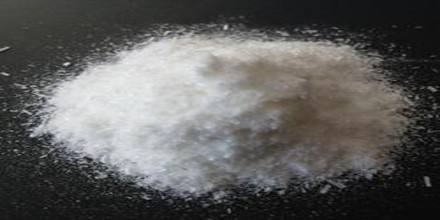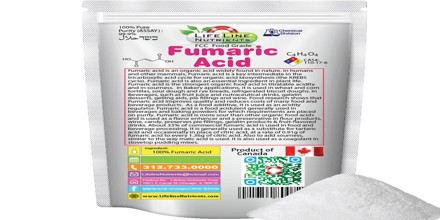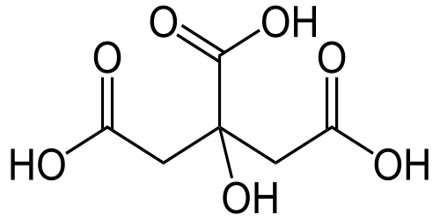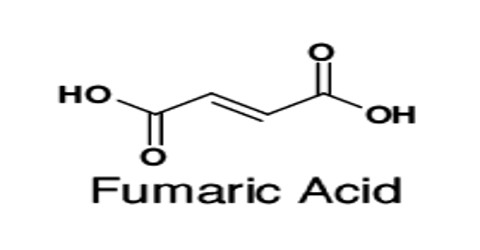Definition of Fumaric Acid
Fumaric acid is an organic acid widely found in nature. In humans and other mammals, Fumaric acid is a key intermediate in the tricarboxylic acid cycle for organic acid biosynthesis. Fumaric acid is also an essential ingredient in plant life. It is the strongest organic food acid in titratable acidity and in sourness.
Fumaric acid is found in bolete mushrooms, lichen and Iceland moss. Human skin naturally produces fumaric acid when exposed to sunlight. Fumaric acid is used in the manufacture of medicines, drinks, food, animal feed, cleansing agents, unsaturated polyester, alkyd resins, and printing inks, and is the strongest organic food acid in titratable acidity and sourness.

Fumaric Acid has been used as a food acidulent since 1946. Fumaric Acid esters were first introduced in the late 1950’s by the German chemist Schweckendiek in the treatment of psoriasis. A standardized “Fumaric Acid” protocol for psoriasis was developed and used FAEs both orally and topically. Applications for the chemical compound then expanded to industrial uses.
Fumaric acid is produced naturally by the body. In addition, fumaric acid is available as a dietary supplement to be consumed orally and as a preparation to be applied topically. Only esterified forms of fumaric should be used, and only after consulting with a dermatologist.

Fumaric Acid in Food
Fumaric Acid is a non-toxic food additive generally used in beverages and baking powders for which requirements are based on purity. It is a substitute for tartaric acid and occasionally takes the place of citric acid, at a rate of 1.36 gram of citric acid to every 0.91 grams of Fumaric Acid for the same taste. It is also an essential ingredient in the manufacturing of candy to add sourness, similar to the way malic acid is used.
Uses of Fumaric Acid
A synthetic form of fumaric acid is used as a food additive to enhance flavor and sourness. The U.S. Food and Drug Administration considers it safe. Fumaric acid is added to certain desserts to give them a more intense aftertaste. Gelatin desserts are one example of foods that contain fumaric acid to make the aftertaste more flavorful, as well as to help strengthen them. Certain dairy foods contain fumaric acid to help stabilize them and to add tartness. Chocolate milk and eggnog, for example, often contain fumaric acid, which helps enhance their flavor. Refrigerated biscuit dough can contain fumaric acid, according to Davidson, which helps stabilize the dough. Some processed and packaged foods have fumaric acid added to them to help stabilize them and enhance their flavor. For example, many processed meats, such as bacon and canned meats, have added fumaric acid. Frozen seafood, smoked meats and the edible casings around sausages might also have fumaric acid added to them. Fumaric acid is added to some processed fruits and vegetables, including dried, canned, frozen and cooked versions. The processed vegetable category includes not only standard green and yellow vegetables but also mushrooms, root vegetables, legumes, aloe vera and seaweed. Fumaric acid is allowed as an additive in alcoholic beverages, including spirits, beer, malt beverages, hard cider, wine, wine coolers and low-alcohol beverages. It also is added to certain condiments including mustard, vinegar, sauces and sweeteners.

Other Uses
Fumaric acid is used in the manufacture of polyester resins and polyhydric alcohols and as a mordant for dyes. Since the early 21st century, it has been used to synthesize one of the first metal-organic frameworks presenting commercial applications thanks to its remarkable adsorption and mechanical properties, combined with a low toxicity compared to other well-studied MOFs.
Benefits of Fumaric Acid
Fumaric acid’s hydrophobic nature results in persistent, long lasting sourness and flavour impact. In food and beverage products with a pH greater than 4.5, Fumaric acid decreases the pH with minimal added sourness. It has more buffering capacity than other food acids at pHs near 3.0 – this is due to its pKa1 and to its low molecular weight.
Fumaric acid blocks or breaks gluten disulphide bonds – this improves dough machinability in wheat flour doughs. It does not absorb moisture that degrades flavour ingredients in dry mix products.
Fumaric acid absorbs virtually no atmospheric moisture – it stays dry and free flowing. Dry-mix products will not cake or harden, even during high humidity storage conditions, when Fumaric acid is used as the acidulant.

5 Facts about Fumaric Acid
- Fumaric acid is generally used in beverages and baking powders for which requirements are placed on purity.
- Fumaric acid is a component of some artificial vinegar flavors, such as “Salt and Vinegar” flavored potato chips.
- Fumaric acid is included in many dairy-based products including chocolate milk, cocoa, eggnog, condensed milk and whey protein beverages.
- Fumaric acid is related to malic acid, and, like malic acid, it is involved in the production of energy (in the form of adenosine triphosphate) from food.
- Taking large amounts of fumaric acid too quickly will possibly cause kidney disorders.
















